Steel Products
Current, Future Steel Buyers Sentiment Indices Run Even
Written by Ethan Bernard
July 21, 2023
SMU’s Current and Future Steel Buyers Sentiment Indices are at parity, with current level and future ticking up, according to our most recent survey data.
Every other week we poll steel buyers about sentiment. The Steel Buyers Sentiment Indices measure how steel buyers feel about their company’s chances of success in the current market, as well as three to six months down the road. We have historical data going back to 2008.
SMU’s Current Buyers Sentiment Index was flat at +64 this week. (Figure 1). Current sentiment hasn’t cracked +70 since the beginning of May after hovering in the mid-70s since the middle of January.
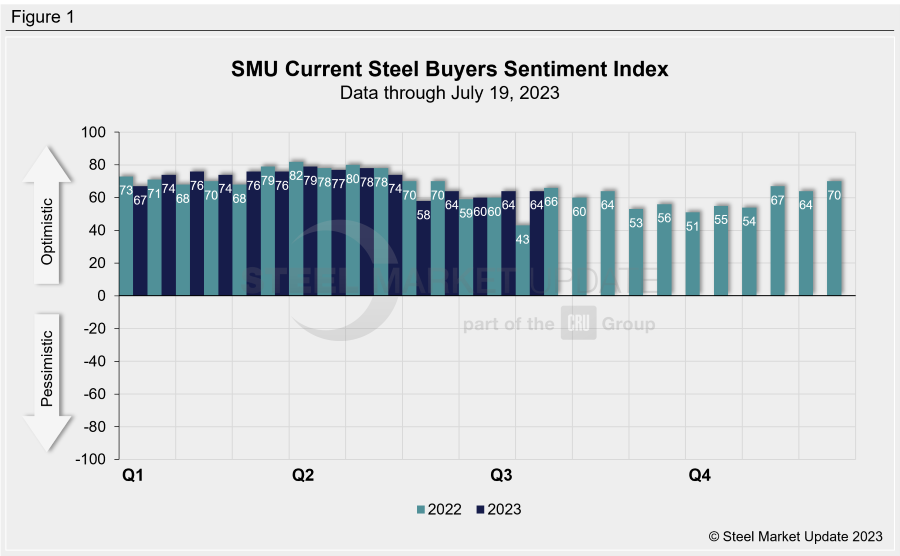
SMU’s Future Buyers Sentiment Index measures buyers’ feelings about business conditions three to six months in the future. This week, the index rose three points to +64 vs. the previous market check (Figure 2). The future and current indices were last running even at the beginning of March when they both stood at +76.
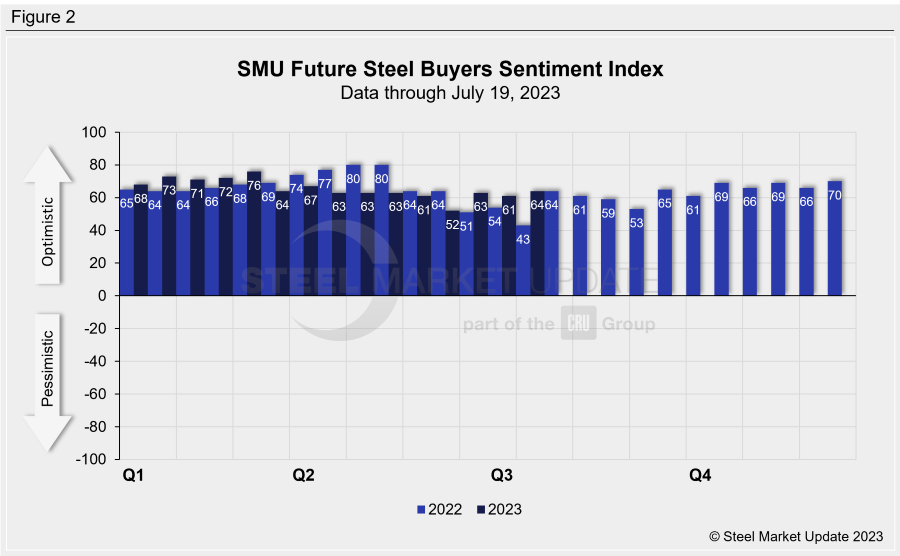
Measured as a three-month moving average, the Current Sentiment 3MMA fell to +64, compared with +66.33 two weeks earlier. (Figure 3).
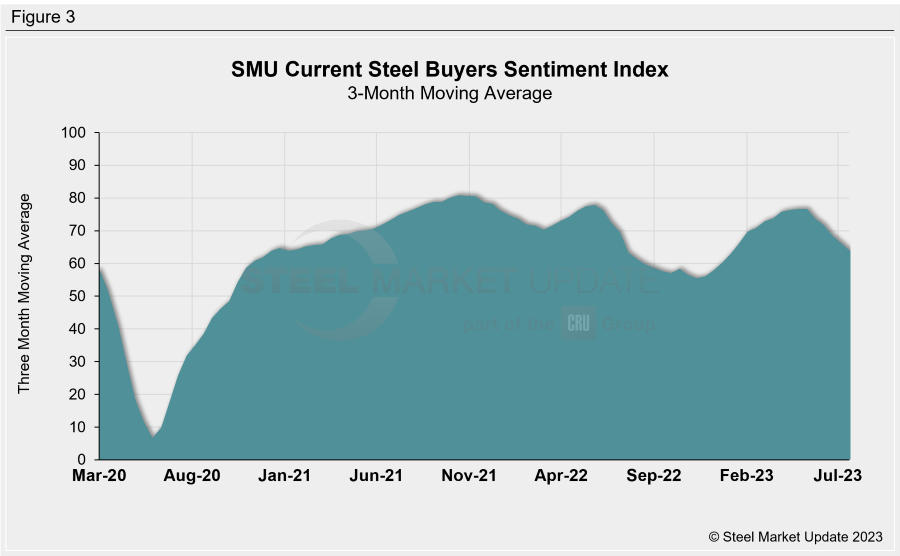
This week’s Future Sentiment 3MMA was +60.67, up slightly from +60.50 at the previous market check (Figure 4).
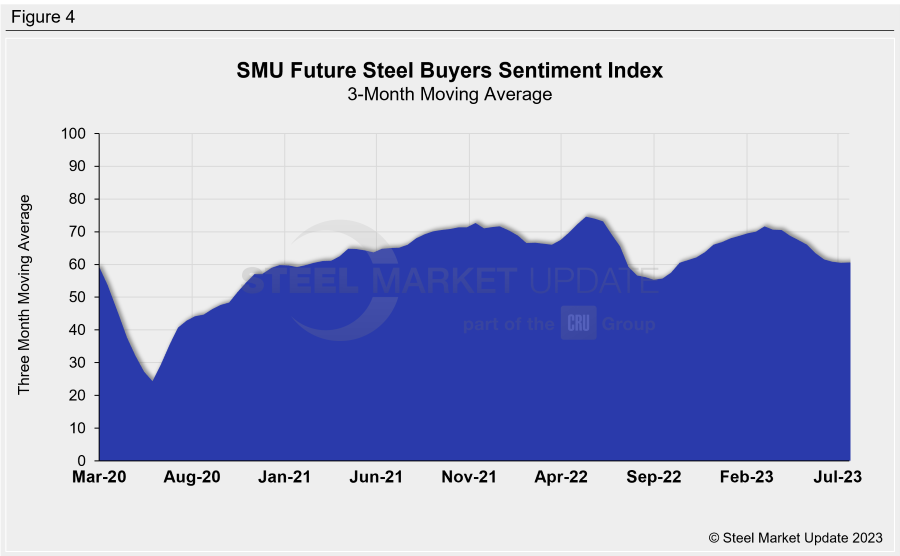
What SMU Survey Respondents Had to Say:
“The market is soft.”
“We’re continuing to buy ‘hand to mouth.’ Just no need to spend the cash right now.”
“Our future buys are below forecast.”
“Coming off of the July 4th holiday, business is better.”
“Summer slowdown.”
“Summer break, then an increase in demand.”
About the SMU Steel Buyers Sentiment Index
The SMU Steel Buyers Sentiment Index measures the attitude of buyers and sellers of flat-rolled steel products in North America. It is a proprietary product developed by Steel Market Update for the North American steel industry. Tracking steel buyers’ sentiment is helpful in predicting their future behavior.
Positive readings run from +10 to +100. A positive reading means the meter on the right-hand side of our home page will fall in the green area indicating optimistic sentiment. Negative readings run from -10 to -100. They result in the meter on our homepage trending into the red, indicating pessimistic sentiment. A reading of “0” (+/- 10) indicates a neutral sentiment (or slightly optimistic or pessimistic), which is most likely an indicator of a shift occurring in the marketplace. Sentiment is measured via SMU surveys twice per month.
Click here to view an interactive graphic of the SMU Current Steel Buyers Sentiment Index and of the SMU Future Steel Buyers Sentiment Index.

Ethan Bernard
Read more from Ethan BernardLatest in Steel Products

SMU flat-rolled market survey results now available
SMU’s latest steel buyers market survey results are now available on our website to all premium members. After logging in at steelmarketupdate.com, visit the pricing and analysis tab and look under the “survey results” section for “latest survey results.” Past survey results are also available under that selection. If you need help accessing the survey results, or if […]

CRU tariff webinar replay now available
CRU’s latest webinar replay on how Trump’s tariffs affect the global steel market is now available on our website to all members. After logging in at steelmarketupdate.com, visit the community tab and look under the “previous webinars” section of the dropdown menu. You’ll find not only this special CRU webinar but also all past Community […]
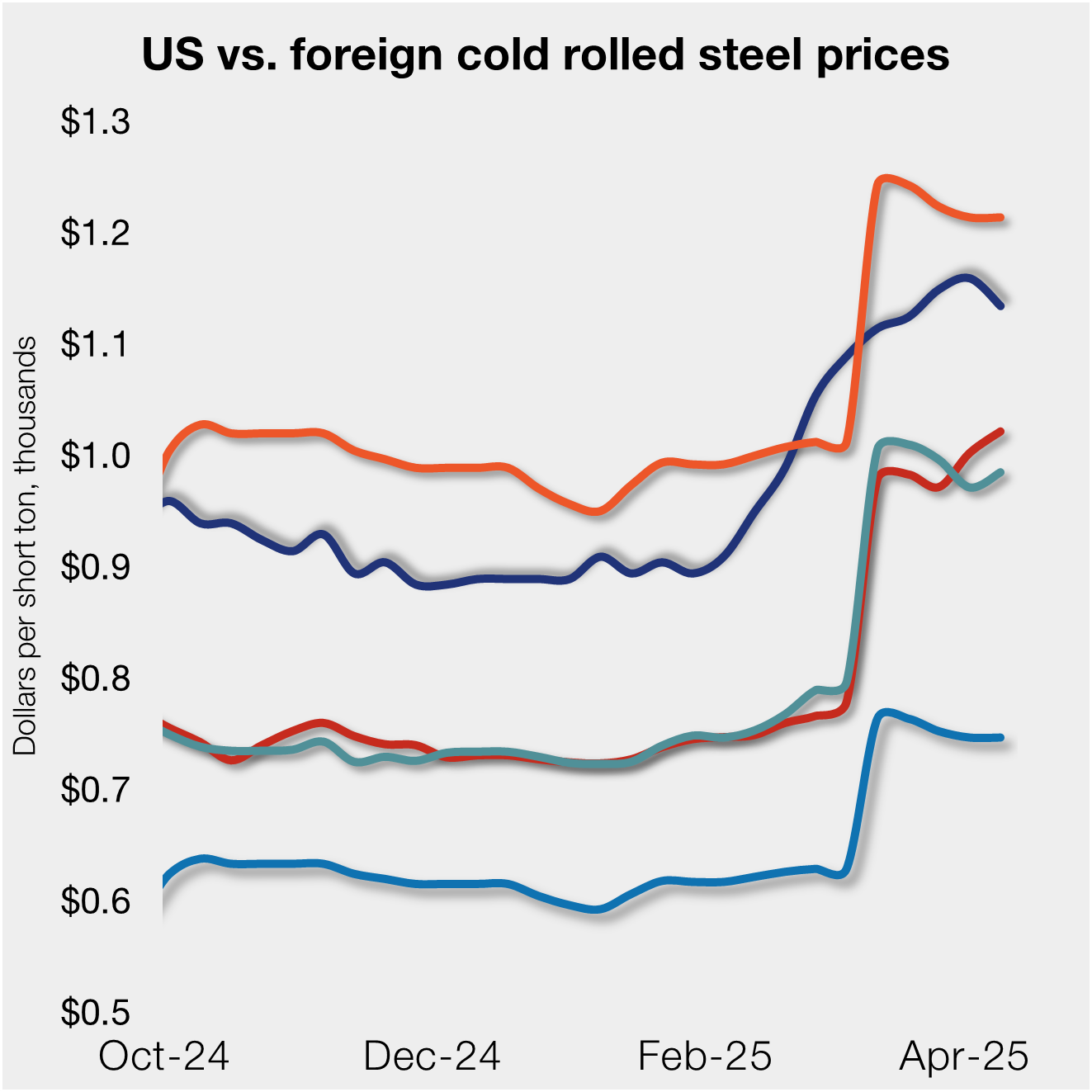
US, offshore CRC prices diverge
US cold-rolled (CR) coil prices declined this week, slipping for the first time since early February. Most offshore markets deviated, moving higher this week.

Construction growth slowed in March on tariff woes: Dodge
The decline comes after reaching a record high in January to kickstart the year.
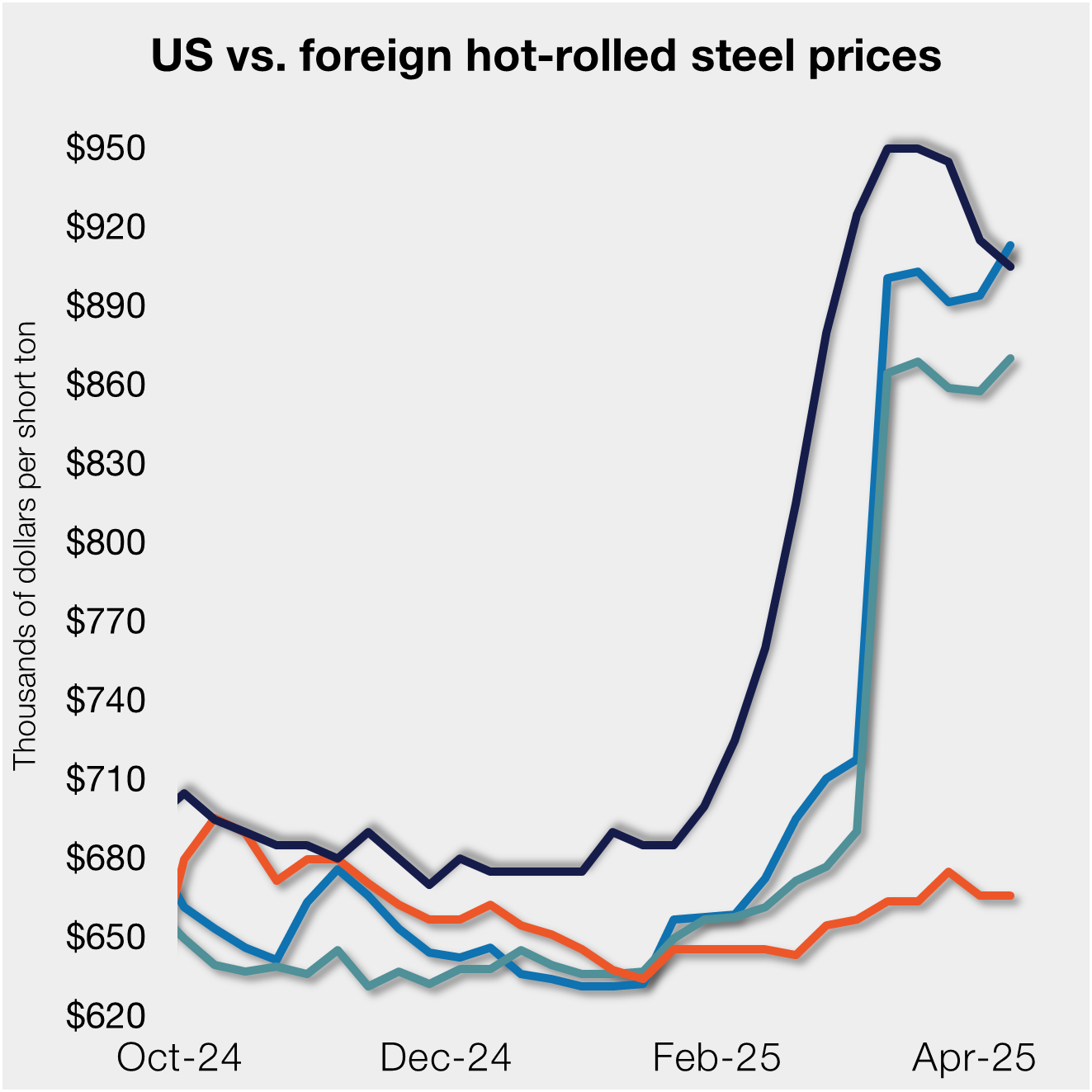
Return of S232 zapped gap between US and EU HR prices, Asian HR remains cheaper
Domestic hot-rolled (HR) coil prices declined this week for a third straight week. Most offshore markets bucked the trend and gained ground. Uncertainty in the US market around tariffs, especially after “Liberation Day,” caused US prices to slip as buyers moved to the sidelines. It’s unclear to date whether the 90-day pause on the more […]
